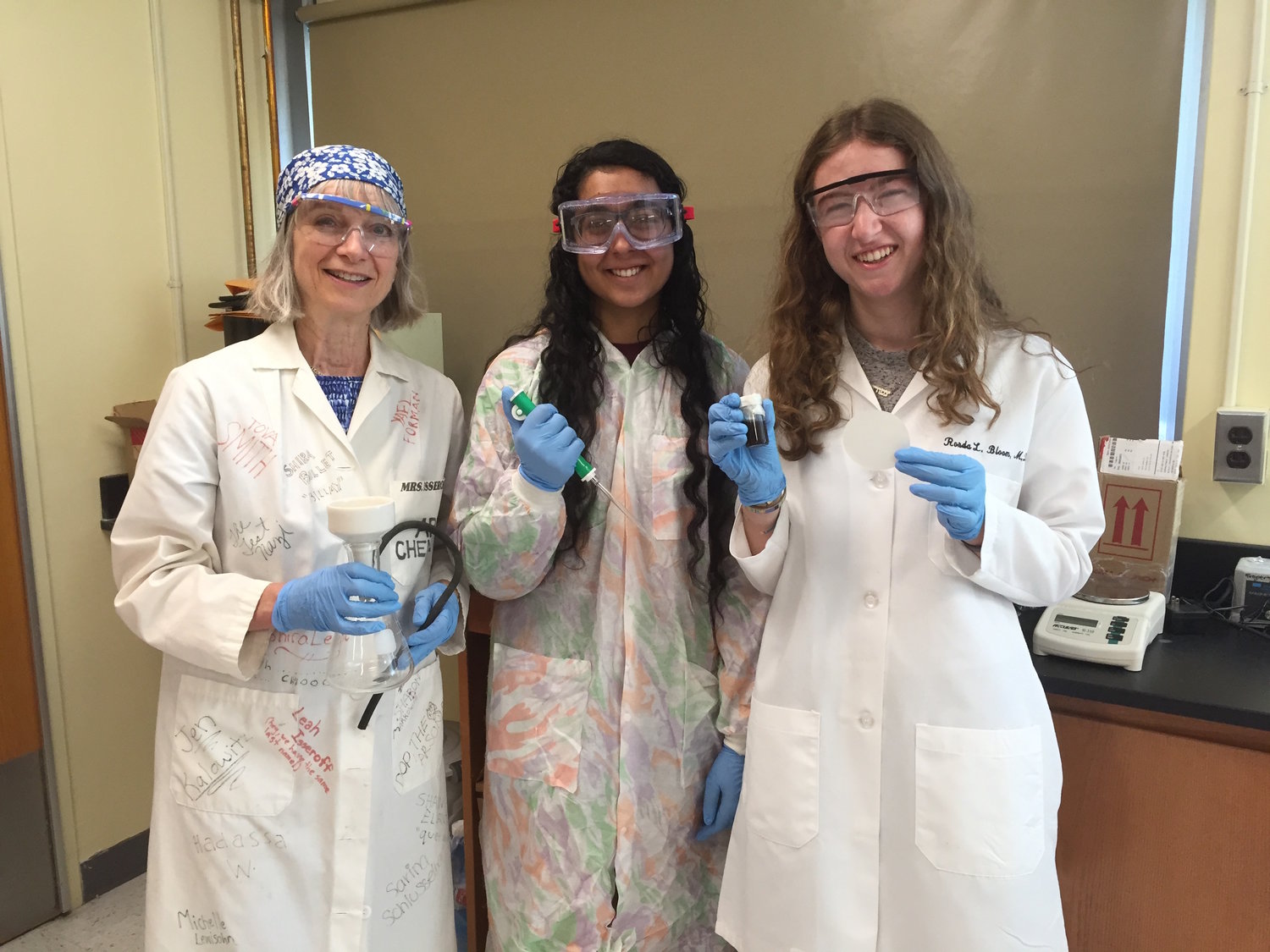Five Towns students are Clean Tech finalists
Two students representing two Five Towns high schools will compete as the only Long Island team against 19 other finalists in the eighth annual Spellman High Voltage Electronics Clean Tech Competition on July 17, hosted by the Rockville Centre-based Center for Science Teaching & Learning at Cooper Union college in Manhattan.
Bhawan Sandhu, of Lawrence High, and Tzipora Schein, from the Hebrew Academy of the Five Towns and Rockaway High, call themselves Team Proton Pumpers, and they work with mentor Rebecca Isseroff, a Lawrence High chemistry teacher. Much of their research was done during the seven-week-long Garcia Summer Scholars program last summer at Stony Brook University, under the direction of Dr. Miriam Rafailovich, and part of it was conducted at Lawrence High.
“I was really surprised to hear that we’re the only Long Island schools that have a finalist team,” Isseroff said. “With so many excellent high school science research programs on Long Island, I guess we just got lucky.”
Spellman High Voltage, founded in 1947, is a global supplier of precision, direct-current, high-voltage power supplies. The CSTL is a nonprofit that encourages science learning and literacy through programs it develops for children and adults. The 20 Clean Tech Competition finalists, expanded this year from 10, were chosen from among 500 entries submitted by nearly 1,200 registrants in 40 countries. The first-place prize is $10,000, second is $7,000, third is $5,000, and the fourth- through 10th-place finishers win $1,000 each. All of the finalists receive $200 stipends to develop a prototype.
Team Proton Pumpers’ project, “Creating a Novel, Cost-Effective and Durable Proton-Conducting Membrane for Hydrogen Fuel Cells,” aims to increase the stability of hydrogen fuel cells and make them less expensive to produce. The pair created a membrane that uses plain filter paper as what Isseroff called a “scaffold” for a mixture of nafion solution and graphene oxide that conducts hydrogen ions and is more stable at higher temperatures and less costly to make.
“We actually stumbled upon this quite by accident,” Isseroff said. “We were trying to make a sheet of graphene oxide that we could try to use as membrane on the hydrogen fuel cell, so we filtered a mixture of graphene oxide and nafion, which is currently used as the membrane, through a very fine filter. We were surprised to see that it adhered to the filter and we couldn’t separate it off, so we figured, let’s try to see if the whole thing could be used as a proton conductor.”
Isseroff said that they tested another sample applied to regular cellulose filter paper on the hydrogen fuel cell, and that was successful as well. “This could significantly cut the costs of manufacturing fuel cells,” she said.
Sandhu, who will be a senior in September, and Schein, a new graduate, took part in the Garcia program and met there last year. They were interested in the same areas of research, and Isseroff introduced them. Having the project selected for the competition “is an honor I could only dream of,” Sandhu said. “I am so very proud of the work that ‘Tzippy’ and I put into this project. I am very excited to represent not only my school, but all of Long Island at this prestigious event.” Sandhu noted the help she and Schein received from Isseroff, Rafailovich and other mentors at Stony Brook.
Dr. Ray Ann Havasy, the CSTL’s executive director, said she considered herself a staunch advocate of science, technology, engineering and math, or STEM, education. Having more women involved in those disciplines, she added, could create more role models, which in turn would inspire more women.
Havasy said she believed that competitions like Clean Tech allow students to push the boundaries of their education. “Schools teach important things, but they do not generally do it in a way in which students can express their own insights,” she said. “The expression I use is ‘student voice and choice.’ How can we, as educators, give students a voice in how they learn? If they own it, they will learn it. In these competitions, we see how far they go — it’s their idea.”
Sandhu said she learned more than just science while immersed in the project. “I learned that I really like research, and that hydrogen fuel cells are really interesting to work with,” she said. “I started thinking about the environment more, since our project deals with hydrogen fuel cells and the process of trying to make cleaner energy. Working with Tzipora gave me an insight that I never had before. She goes to a Jewish private school that is very different [from] my public school, so it was fun seeing the parallels and differences between both of our schools.”
Research is exciting, Schein said, but she added that a scientist must have a “high frustration level,” because experiments frequently fail before they succeed. “Collaborating with Bhawan Sandhu from Lawrence High School was a great experience,” Schein wrote in an email. “We are both from the Five Towns, and we are on the same page on a lot of things and have similar outlooks. We managed to have fun while working hard together, and I’m glad we had this opportunity to get to know each other and strive towards a common goal.”
Schein plans to spend a year in Israel before entering the University of Pennsylvania in 2020.
Admission to the competition is free and open to the public. It begins at 9 a.m., when the projects will be on display. Judging will take place throughout the day and there will be panel discussions on careers and engineering with industry professionals. The awards ceremony is at 2 p.m. Cooper Union is at 30 Cooper Union Square in Manhattan.

 50.0°,
Overcast
50.0°,
Overcast 





